Why We Quit Exercise (And How to Stick With It)
Let’s be honest — starting an exercise routine isn’t the real challenge. It’s showing up daily when Netflix calls your name, and your bed feels extra comfy.
Most of us know the basics. The official playbook says we need two weekly strength sessions and either 150-300 minutes of moderate activity (think brisk walking) or 75 minutes of huffing-and-puffing vigorous exercise. Sounds simple enough, right?
Science keeps giving us more reasons to get moving. Physical activity is like a wonder drug — it works its magic regardless of whether you eat perfectly or sleep like a baby. It fights off heart disease, keeps blood pressure in check, and might help you live longer. Plus, that old myth about needing to exercise for hours? Busted. Even short bursts of movement count.
Here’s the kicker: Sitting is the new smoking. The more time we spend glued to our chairs, the higher our risks of heart problems and other health issues increase. But there’s good news—any movement helps. Take a lap around your living room during commercial breaks. Dance while doing dishes. Stand up and stretch every hour. These small moves add up.
The million-dollar question isn’t whether we should move more — we all know we should. It’s how to keep going when motivation ghosted us three weeks ago, when winter turns our running path into a slip ‘n slide, or when life throws us one of those lovely curveballs.
Want to know how actually to stick with it this time? Let’s talk strategy.
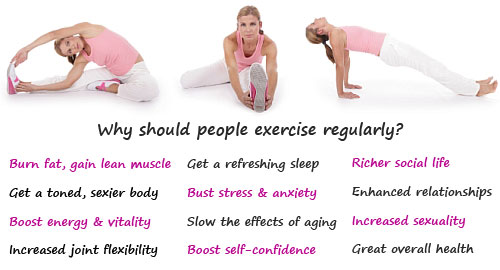
The Real Reason You Should Work Out (And It’s Not What You Think)
Let’s talk about working out. It is not the “beach body in 30 days” nonsense plastered all over Instagram, but the truth about why people exercise – and why most give up.
Here’s something funny: looking good in a swimsuit might get us to the gym when we’re young. We’ve all been there – crushing those bicep curls while sneaking peeks in the mirror. But once we hit our mid-20s, something shifts. Those superficial motivations just don’t cut it anymore. And those vague New Year’s resolutions? You know the ones: “I’m going to get fit!” (Whatever that means.) They fizzle out faster than a sparkler on the Fourth of July.
Want to know the secret sauce of people who stick with exercise? They’ve found something way better than the promise of future abs. They work out because it makes them feel amazing right now. It’s that post-exercise buzz when your brain is firing on all cylinders. It’s laughing with your running buddy about your matching “I hate running” t-shirts or feeling your shoulders relax after a yoga class when all the day’s stress melts.
Think about it: we’re all busy. Like, busy. Finding time to exercise feels impossible between work deadlines, family obligations, and remembering if we fed the cat. That’s why it needs to give us something back – something real, something immediate, something that makes us think, “Yeah, this is worth skipping that extra episode on Netflix for.”
Getting Started (Without Burning Out)
Discuss that classic January scenario: You’re pumped up on New Year’s energy, ready to transform your life. So you dive in headfirst – new diet, fancy gym membership, quitting all your vices cold turkey. By January 15th, you’re exhausted, discouraged, and eyeing that bag of chips like it’s your long-lost love.
Here’s the thing about fitness: it’s more like a slow dance than a sprint. If you’ve been channeling your inner couch potato for a while, your body needs time to adjust. And that’s completely okay.
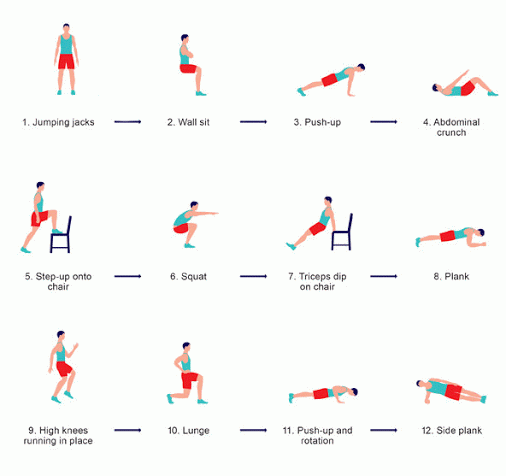
You’ve probably heard about HIIT workouts – those intense, sweaty sessions that fitness influencers swear by. They’re great! But trying to do them daily is like drinking from a firehose. Instead, try this: Pick one day (maybe two if you’re feeling spicy) for HIIT, then fill your week with gentler stuff. Go for a leisurely jog where you can hold a conversation. Take a dip in the pool. Or walking briskly while catching up on your favorite podcast.
The secret sauce? Rest days. Aim for two or three of them in your first month. Your body isn’t being lazy – it’s busy behind the scenes, rebuilding and getting stronger. Think of rest days as your fitness foundation, not your fitness enemy.
Remember: The tortoise won that race for a reason. Start slow, build steady, and you’ll still be crushing it long after the January warriors have gone home.
Finding Your Kind of Fun
Remember when exercise wasn’t called exercise? When it was playing?
We didn’t think about burning calories or targeting muscle groups as kids. We just moved because it felt good. Some loved climbing trees, others couldn’t get enough swimming, and some would spend hours jumping rope. The secret? We didn’t force ourselves to do things we hated.
Here’s the thing: you don’t need to fall in love with burpees or become a marathon fanatic. Really. That’s not how this works. The fitness industry might try to convince you you’re doing it wrong if you’re not obsessed with your workouts, but that’s nonsense.
Instead, think back to what made you smile as a kid. Did you love dancing in your room? Swimming until your fingers pruned? Racing your friends down the street? That joy is still in you somewhere – it just needs a little coaxing to come out.
And yes, you’ll discover some nice perks along the way. Your body might start feeling more assertive and more energetic. You might surprise yourself by mastering a new skill or sport. But these are bonuses, not requirements.
The trick is to look beyond the obvious. Skip the crowded gym if it makes you miserable. Maybe you’d instead join a local kickball league, take dance classes, or explore hiking trails with friends. The best exercise isn’t the one that burns the most calories – it’s the one you’ll do.
Remember: movement should add joy to your life, not drain it. If you hate every minute of running, guess what? You don’t have to run. Ever. There are countless ways to stay active, and somewhere out there is one that clicks with you. You have to be willing to explore until you find it.
Let’s Talk About Being Kinder to Yourself
Life’s messy. We all know we should exercise more, but beating yourself up doesn’t help. The truth is, there’s way more to the story than just “wanting it enough.”
Maybe you’re juggling bills that keep you working late. Or you’re running after toddlers all day (which counts as exercise, by the way!). Perhaps you live in a neighborhood where jogging isn’t exactly appealing. Add in the exhaustion that comes with, well, existing these days, plus dealing with work stress or taking care of sick family members, and suddenly, that workout feels about as achievable as climbing Mount Everest.
Here’s the thing: people who seem to have it all figured out? They’ve probably got a support system that makes staying active easier. So next time someone suggests you’re just “not trying hard enough,” remember that motivation is just one small piece of a much bigger puzzle.
Let’s get real for a second. Promise yourself you’ll hit the gym five days a week when you can barely find time to fold your laundry. That’s setting yourself up for disappointment. Instead, try this: start small. Small. Then, at the end of each week, take a minute to think about what worked. Maybe that lunchtime walk felt doable, but evening workouts were a total non-starter. That’s not failure – that’s valuable information about what works for you.
Remember: the best exercise plan isn’t the most ambitious one. It’s the one you’ll do.
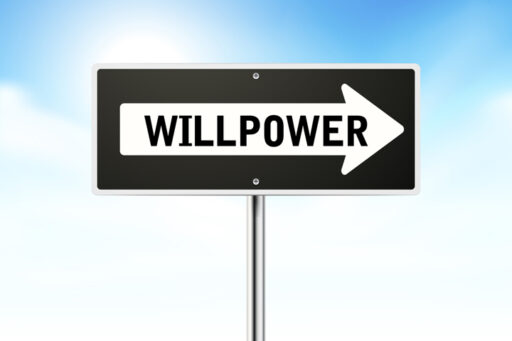
Why Willpower Is a Trap
Let’s be honest — if you’re white-knuckling through something, you probably don’t want to do it. And that’s normal.
Take exercise, for example. Instead of forcing yourself to hit the gym because you “should,” try asking yourself some fundamental questions: What makes you feel good about moving your body? Maybe it’s that post-workout high, how you sleep better at night, or having more energy to play with your kids.
The trick isn’t to muscle through with pure willpower—it’s to find your genuine motivation. When did you last feel amazing after a workout or completely energized after a long walk? Those feelings are way more powerful than any “should” or “must” you throw at yourself.
And here’s the thing: on days when you’re not feeling it, get curious instead of critical. Ask yourself: What would move feel good right now? Maybe it’s a gentle stretch instead of a hardcore workout. Or perhaps it’s dancing in your kitchen while making dinner. No rule says exercise has to feel like punishment.
Remember, the best kind of motivation doesn’t come from gritting your teeth but from wanting to do something. And when you find that sweet spot, you won’t need willpower at all.
Making Movement Matter
Let’s face it: finding time to exercise can feel impossible. But here’s a little secret – you don’t need to block out an hour for the gym to get moving. The trick is sneaking movement into things you’re already doing.
Think about your typical workday. Instead of firing off another email to your colleague down the hall, why not walk over for a chat? You will get those steps in and probably solve the problem faster (and maybe even make a friend). And that commute? Walking or biking to work might become the best part of your day – fresh air, a clear head, and exercise all wrapped in one.
But here’s where it gets exciting: the best exercise doesn’t feel like exercise. Join a local sports club, and suddenly, you’re not just working out – you’re part of a community. Meet a friend for a morning run; that dreaded cardio becomes quality catch-up time. Head to the trails for your weekend workout, and you’re not just burning calories – you’re exploring nature.
The beauty of this approach is that every bit of movement serves double duty. You’re not just getting healthier; you’re building relationships, saving time, and maybe even saving the planet (look at you, bike commuters). It’s about making movement meaningful, not just mandatory.
So next time you’re about to send that inter-office email, ask yourself: could this be a walk-and-talk instead?
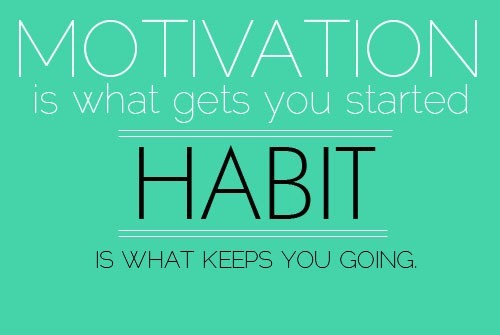
Turn Running into Your New Normal
Let’s be honest — starting a running routine feels like solving a puzzle every single day. Where did you leave those running shoes? Is your water bottle clean? Which route won’t bore you to tears today?
But here’s the thing about habits: they get easier. Much easier. After a few weeks, you’ll grab your gear on autopilot, like brushing your teeth or checking your phone in the morning. Your brain won’t waste energy debating whether to run — you’ll do it.
Think about it: the most successful runners don’t have superhuman willpower. They’re the ones who’ve turned running into something as natural as breathing. They lay out their gear the night before. They know their favorite routes by heart. They’ve removed all those tiny decisions that drain your motivation.
Missing a run here and there? That’s life. But consistency transforms running from a chore into a cherished part of your day. It’s like building a house — laying one brick at a time might not feel dramatic, but you’ve created something solid and lasting before you know it.
So start small. Make it easy. Watch as you run shifts from something you must do to something you get to do.
“I Don’t Have Time to Exercise” (Let’s Talk About That)
We’ve all said, “I just don’t have time to exercise.” Maybe you’re juggling two jobs, caring for kids or elderly parents, or just trying to keep your head above water. I get it. Life is messy and packed with responsibilities.
But let’s be honest for a second. Sometimes, what we call “no time” is just “not a priority.” That’s not a judgment — it’s just worth being honest with ourselves about our choices.
Here’s something cool I learned: There are two ways to plan that can make a huge difference. First, there’s the “nuts and bolts” planning—figuring out the where, when, and how of exercise, like deciding whether to hit the gym every Tuesday at 6 AM or take a walk during your lunch break.
Then there’s my favorite: “what-if” planning. Consequently, this is where you play chess with your future self. You know that voice that’ll say “it’s raining, maybe tomorrow” or “I’m too tired”? Yeah, that one. What-if planning means having a ready answer for all those excuses before they pop up. It’s like conversing with your future self and winning the argument.
The magic happens when you use both types of planning together. Because let’s face it — life will throw curveballs. But having a solid plan A and a bunch of backup plans means you’re ready for whatever comes your way.
Time Isn’t an Excuse (And That’s Good News!)
Do you think workouts need to eat up your whole evening? Think again.
Here’s the thing most fitness influencers won’t tell you: you can get a solid workout in the time it takes to watch a few TikTok videos. Seriously. Fifteen minutes of focused exercise can wake up your muscles, boost your mood, and keep you on track with your fitness goals.
Sure, longer workouts have their place. But on those crazy days when your calendar looks like a game of Tetris, a quick session is infinitely better than no session at all. And let’s be honest — we can all find 15 minutes between our morning coffee and bedtime.
For those days when you do have more time? Great! Block it out in your calendar like you would any other important meeting. Your future self will thank you for it.
Remember: The best workout isn’t the longest — it’s the one you do.

When Plan A Fails, There’s Always Plan B
Let’s be honest – we’ve all been there. The rain pours down for a week straight, your running shoes gather dust, and that familiar wave of guilt crashes over you. Sound familiar?
Here’s the thing most people get wrong: a few setbacks don’t mean you’re destined to fail. They tell you you haven’t found your groove yet.
Think about it. Maybe those 5 AM runs would never work because you’re about as much of a morning person as a grumpy cat. Or perhaps that intense CrossFit class wasn’t your style because, let’s face it, not everyone dreams of flipping tires on a Tuesday.
And that’s perfectly fine.
The secret isn’t forcing yourself to stick with something that isn’t working. It’s about being smart enough to pivot and struggling with traditional workouts? Try dancing in your living room, joining a recreational sports league, or even doing yoga with your dog (yes, that’s a real thing).
Stop beating yourself up for “failing” at someone else’s idea of fitness. Instead, get curious. What would work for you? What sounds fun? Because the best exercise plan isn’t the one that works for Instagram influencers – it’s the one you’ll do.
Remember: changing your approach isn’t giving up. It’s growing up.
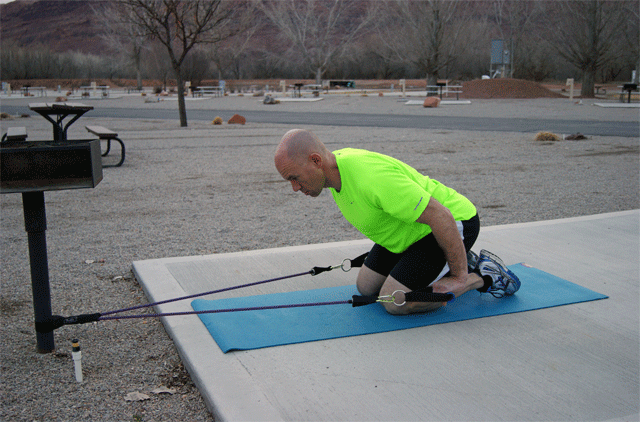
Building Strength & Stability at Any Age
Here’s something they don’t tell you when you hit 30: your muscles start playing hide and seek — and they’re good at hiding. But don’t worry! There’s plenty you can do about it.
Let’s talk resistance training. No, you don’t need to become a gym rat or start bench-pressing cars. Simple exercises like push-ups (yes, the ones you dreaded in PE class) or playing around with resistance bands can work wonders. These exercises are like telling your muscles, “Hey, stick around. We still need you!”
But that’s not all your body needs. Think of exercise like a three-course meal. Resistance training might be your main course, but you’ll want some cardio on the side — a brisk walk with your dog, dancing in your kitchen, or chasing your grandkids around the yard.
And here’s the dessert course: balance training. You might not think about balance much now, but your future self will thank you. Try standing on one foot while brushing your teeth or walking heel-to-toe like you’re on an imaginary tightrope. These little challenges keep your body guessing and your stability strong.
Remember, it’s not about becoming an Olympic athlete — it’s about keeping your body strong, stable, and ready for whatever life throws your way.
Finding Your Sweet Spot: When to Level Up Your 5K
So you’ve gotten into a nice rhythm with your 5K runs. That’s awesome! But now you’re scratching your head, wondering if it’s time to kick things up a notch. Here’s a simple trick: during your runs, ask yourself, “On a scale of 1-10, how hard am I working right now?”
Pay attention to those numbers. If you’re cruising along at what used to feel like a seven but now feels more like a 4 or 5, your body’s sending you a message: “Hey, I’m ready for more!” That’s your cue to start picking up the pace.
The cool thing about our bodies is that they quickly adapt. Stick to your running routine; you should notice changes within a few weeks. Maybe your breathing is more manageable, or that killer hill no longer feels so killer. When your regular route feels like a walk in the park, it’s time to challenge yourself.
Remember, progress comes in different flavors. Sometimes, it’s about shaving seconds off your time, running longer without getting winded, or tackling steeper routes you used to avoid. The key is listening to your body and giving it the push it needs when it’s ready.
Get Fit Without Leaving Your Living Room
Let’s bust a myth: you don’t need a fancy home gym to get in shape. Do you have kids running around? Stuck in a tiny apartment? No problem. Your living room is all the gym you need.
Here’s an incredible trick fitness pros use: Peripheral Heart Action training (fancy name, simple concept). This technique is perfect for small spaces and involves alternating leg and arm exercises. Think of it as fooling your body into an incredible workout.
Want to try it? Here’s the secret sauce: bounce between upper and lower body moves. Do a set of squats (the ones that make your legs burn), then switch to some modified push-ups (no shame in doing them on your knees). Follow up with lunges (watch those wobbly legs!), then give your arms some love with tricep dips using any sturdy chair. Finish strong with some glute raises to wake up that sleeping booty.
The best part? You’ll get your heart pumping and muscles working in 15-20 minutes. You only need your body weight and a chair for those tricep dips. Dumbbells are nice if you have them, but they’re optional. Who knew getting fit could be this simple?
Remember: the best workout is the one you’ll do. And when it’s this accessible, you’ll have no excuses!
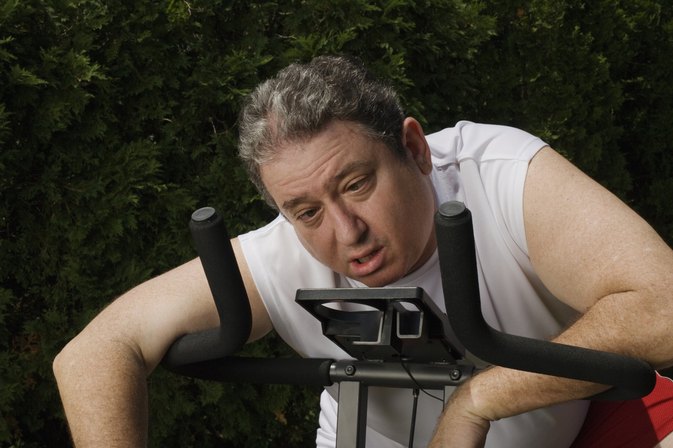
Break a Sweat (Your Body Will Thank You!)
Want to know if you’re exercising hard enough? It’s pretty simple: you should be breathing heavily and feeling warm. Think of it like this – if you’re trying to chat with a friend, you should be breathless between words.
Take gardening, for instance. Pulling a few weeds is nice but won’t get your heart pumping. Want to turn your garden into a gym? Grab a shovel and start digging. Your flowerbeds and your body will both bloom.
And let’s talk about walking your dog. Your pup probably has the right idea when bouncing around with excitement. Instead of a stroll, why not turn it into an adventure? Race your four-legged friend up a hill, or find a trail with challenging terrain. You’ll both come home tired, happy, and healthier.
Remember: if it feels too easy, it probably is. The best exercise leaves you a little sweaty and a lot accomplished.
Should You Exercise When You’re Sick?
Let’s talk about working out when you’re under the weather. Here’s a simple way to think about it:
Got the sniffles or a headache? You might be okay with breaking a sweat. These “above the neck” symptoms usually aren’t deal-breakers for a light workout. But notice I said “light” – this isn’t the time to train for a marathon.
But if you are experiencing chest congestion, body aches, or breathing troubles, do yourself a favor and rest. These “below-the-neck” symptoms are your body’s saying, “Not today.”
Listen to your body – it’s more intelligent than you think. Even with minor symptoms, skip the gym if you feel like garbage. And when you’re bouncing back from being sick, ease into it. Don’t try to be a hero. Instead of jumping back into your usual routine, try shorter workouts or fewer sessions per week. Your body will thank you and return to full strength sooner.
Remember: Working out is supposed to make you feel better, not worse. When in doubt, take it easy. The weights will still be there tomorrow.

When Can I Get Back to Working Out?
Let’s discuss something that drives athletes crazy: the waiting game after an injury.
First, don’t rush back into exercise without talking to your doctor. They’re the ones who know what’s best for your specific injury. Every sprain, strain, and setback is different, and what worked for your gym buddy might not work for you.
Nobody tells you that recovery is messy. One day, you’re feeling great and ready to take on the world, and the next, your body says, “Nope, not today.” That’s completely normal. Recovery isn’t a straight line to getting better—it’s more like a squiggly path with many ups and downs.
Think of healing like the stock market: progress with many dips and curves. The key is to stay patient and listen to your body. Trust me, giving yourself proper time to heal now means returning to your favorite activities sooner rather than later.
Getting Back in Shape After Baby (But No Rush!)
Let’s be honest – you just did something incredible. You grew and delivered an entire human being. That’s not just amazing, it’s superhero-level stuff. So why rush back to the gym?
Your body’s been through quite a journey and needs time to recover. That six-week checkup with your doctor? It’s not just a formality – it’s your green light to start moving again at your own pace. And if you had a C-section, you’ll need even more time to heal. That’s not being slow; that’s being smart.
Maybe you were a fitness fanatic before pregnancy, or perhaps the most exercise you got was walking to the fridge. Either way, that’s fine! Your postpartum fitness journey is yours alone. Some moms deal with pregnancy-related back pain or abdominal muscle separation (fancy medical term: diastasis recti), and that’s normal, too. A physiotherapist can be your new best friend if you face these challenges.
Start small when you’re ready – and only when you’re ready. Those midnight walks with a crying baby? They count as exercise! Carrying your little one around? That’s weightlifting. Your body will tell you when it’s ready for more, and until then, focus on the incredible job you’re doing as a new mom.
Remember: Growing a tiny human was your last big workout. Now it’s time to recover, bond with your baby, and be kind to yourself. The rest will follow naturally.

Don’t Let Winter Win
Let’s be honest — when it’s cold and dark outside, your bed feels like the coziest place in the universe. I get it. That voice in your head starts making compelling arguments about staying under the covers.
But here’s a little secret: winter warriors aren’t superhuman. They know something the rest of us often forget — the most challenging part isn’t the workout, the run, or whatever activity you dread. It’s the mental battle of getting started.
Try this: Put your gear right by the door the night before. Make it stupidly easy to grab and go. Because once you’re out there, moving and grooving, you’ll have that same revelation you always do: “Why did I make such a big deal about this?”
Remember, winter isn’t your enemy — it’s just wearing a scary costume. Don’t let a little cold weather steal your momentum. Besides, hot chocolate tastes way better when you’ve earned it.
The 4-Day Rule: A Simple Strategy for Consistent Exercise
We’ve all been there — starting a new fitness routine with the best intentions, only to watch it fizzle out weeks later. But what if there was a more straightforward way to stay consistent? Enter the 4-day rule.
The concept is simple: never let more than four days pass between workouts. That’s it. There is no complicated schedule or guilt-inducing daily commitment—just one golden rule that’s both flexible and effective.
Here’s why it works: the 4-day rule creates a safety net that prevents short breaks from turning into permanent ones. It’s like setting a mental alarm after the third day of inactivity, gently nudging you back to your fitness routine before you lose momentum.
The beauty of this approach lies in its adaptability. Do you have a busy week ahead? Front-load your workouts to “bank” some exercise days. Are important meetings filling up your calendar? You’ve got a four-day window to work with. This flexibility makes it particularly valuable for professionals, parents, and anyone juggling a packed schedule.
Think of it as your fitness insurance policy. Just as you wouldn’t let your car go without maintenance for too long, this rule ensures your body gets regular tune-ups. The only exceptions? Illness, injury, or family emergencies — because sometimes life truly does need to take priority.
This rule’s psychological impact makes it particularly powerful. Instead of feeling guilty about missing a day or two, you can focus on maintaining a sustainable long-term pattern. It’s not about perfection; it’s about persistence.
Remember, the best fitness routine isn’t the most intense or complex—it’s the one you can consistently follow. The four-day rule might be your ticket to making exercise a lasting part of your lifestyle, not just another failed resolution.
Important Safety Note:
As with any new exercise program or equipment, it’s essential to consult your physician to ensure the equipment is safe for you to use. It is especially crucial if you have any medical or physical conditions impacting your ability to exercise properly or putting your health at risk. Additionally, if you’re taking medication that affects your heart rate, blood pressure, or cholesterol level, your doctor’s advice is vital to create a workout plan that suits your needs.
Share Your Thoughts and Questions
I hope this in-depth article was helpful and informative. I encourage you to share your thoughts and questions on the topic. Do you currently or have you had an exercise routine? Your insights can help others make an informed decision. Additionally, I welcome any feedback about my website and suggestions for future content. Your input is invaluable in creating a supportive and informative community.
I look forward to hearing from you and continuing the conversation!
Disclaimer: I am not a personal trainer or a healthcare professional. The above guidelines work best for me, but they might not be the proper guidelines for you. I recommend consulting a doctor or health professional before changing your diet and fitness routine.
You May Also Like
Thanks so much for sharing this post about exercise. A lot of people find it a challenge to get involved in exercises and all, but the way you have presented this article, I can only say that you have done exceptionally well. I love the detailed information you shared here, and I must tell that it genuinely interests me. Thanks
I like the way you put all this material together about exercise. Many people find it challenging to do it because it’s physically tiring or something. However, with the latest scientific evidence which shows that physical activity has many health benefits independent of other healthy behaviors, like proper nutrition and many more, it will help most people to change their viewpoints on exercise. I also like the way you mentioned a different kind of activity. Thanks so much for this information; I’ll check those sites out and also share.
The first fundamental
Hello Eunice,
Thanks for sharing your thoughts.
All the best!